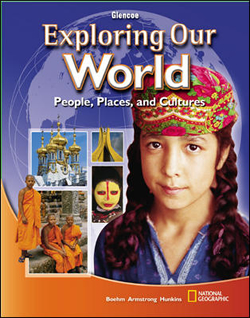
Exploring Our World: People, Places, and CulturesChapter 30: Australia, Oceania, and Antarctica TodayChapter OverviewsExtensive farming and ranching, along with other agricultural and economic practices, have affected Australia and New Zealand. Australia has a strong economy. The country has needed skilled workers and has encouraged tourism. At the same time, the country works to improve the condition of the Aborigines, who have suffered discrimination since European settlement. Aborigines have won court cases that have given them control over land, which worries other landowners. Australia exports minerals and energy resources and is a major exporter of wool, lamb, beef, and cattle hides. Growth has led to environmental problems. New Zealand has a growing economy that is based on trade, especially the export of wool and meat. It is also expanding into wood and paper products. Many of Oceania’s islands have limited resources and depend on tourism or aid from other countries. The area is divided into three groups of islands: Melanesia, Micronesia, and Polynesia. New Guinea is the largest and most populous island in Melanesia, and its people practice subsistence farming or work on large plantations. The Fiji Islands in Melanesia suffer from ethnic conflict between Melanesians and South Asians. Other islands such as the Solomon Islands, Vanuatu, and New Caledonia have mostly people from the Melanesian ethnic group. People in Micronesia and Polynesia practice subsistence farming. Micronesian islands have strong ties to the United States and some have U.S. military bases. Many Polynesian islands are so poor that they depend on foreign aid. A few such as Samoa and Tonga have encouraged tourism to boost the economy. Oceania’s islands had been sites of nuclear testing in the past, which continues to have effects today. Scientists fear that human activity may be harming plant and animal life in Antarctica even though the continent does not have a permanent human population. Higher global temperatures may lead to the loss of ice in and near Antarctica. In addition, a hole in the ozone layer above Antarctica concerns scientists. Many countries today have scientific research stations in Antarctica, but no country claims Antarctica. |  |















